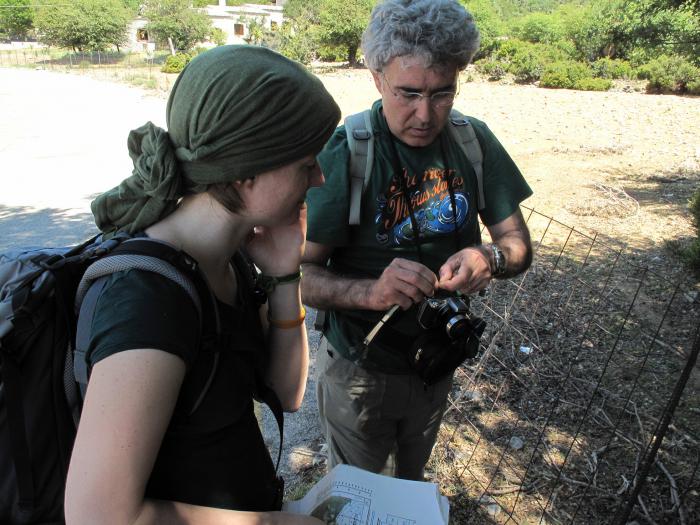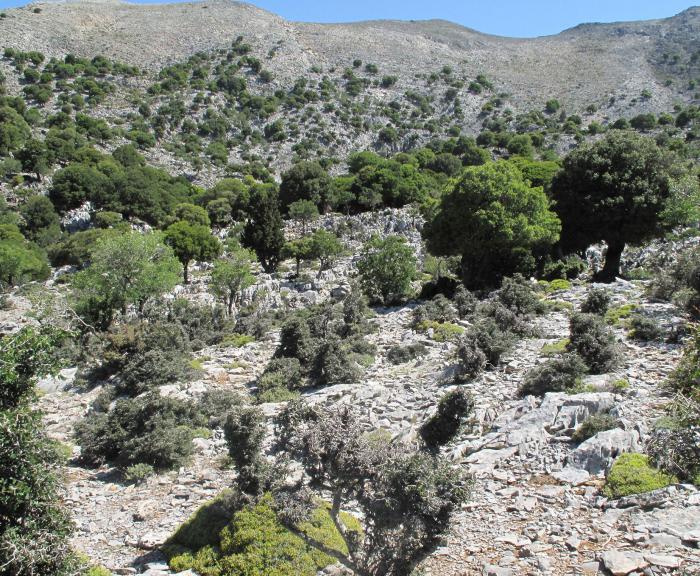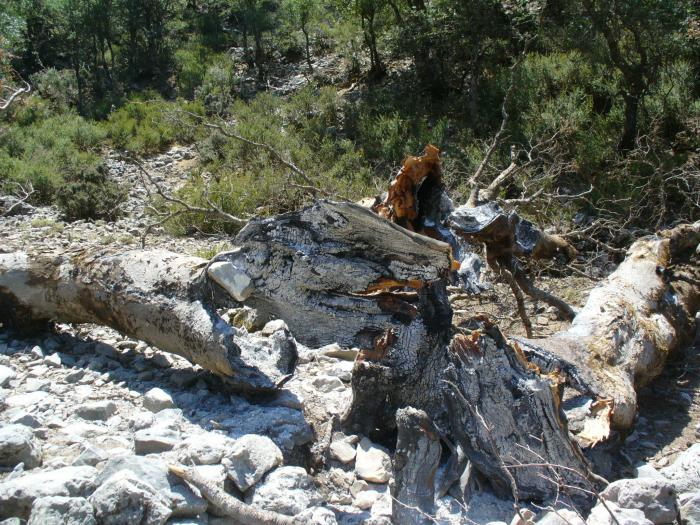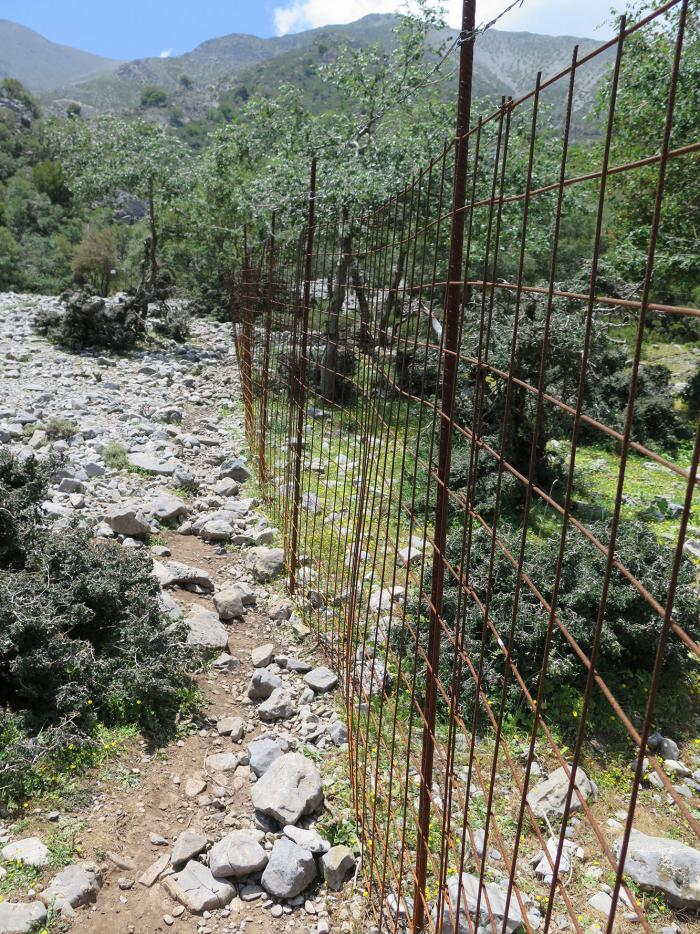Zelkova abelicea (Lam.) Boiss. is one of the most symbolic trees of the Mediterranean island of Crete. Less than 45 populations of Z. abelicea are known, mainly in Levka Ori (ca. 30) and in the Dikti Mountains (ca. 10). Only one population occurs in the Psiloritis Mountains, one on Mount Kedros and one small population in the Thripti Mountains. Recent studies show however, that all populations incur threats by overgrazing and browsing (goats and sheep), as well as from soil erosion, drought and fires.
Leading institutions: Mediterranean Agronomic Institute of Chania (Department of Geoinformation in Environmental Management and Mediterranean Plant Conservation Unit), Forest Directorates of Crete, University of Fribourg (Laurence Fazan).
MORE DETAILS: www.abelitsia.gr
New publication of Laurence Fazan
This article is part of the PhD thesis of L. Fazan and is entitled “Understanding the factors influencing the growth of Zelkova abelicea in browsing exclosures”. It was published in the journal Global Ecology and Conservation.
This research paper investigates the reasons behind the differences in growth found throughout the distribution range of Z. abelicea. Unbrowsed Z. abelicea individuals from western and central Crete grew on average twice as much in the same given amount of time than individuals from eastern Crete. These growth differences are thought to be caused by differences in seasonal precipitation patterns throughout Crete as well as differences in individual Z. abelicea heights. Our results highlight the important role of spring and early summer climatic conditions in conditioning the growth of Z. abelicea individuals.
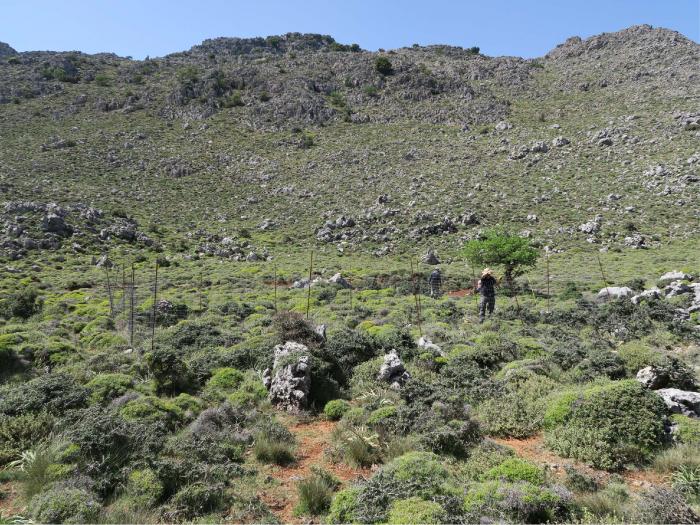
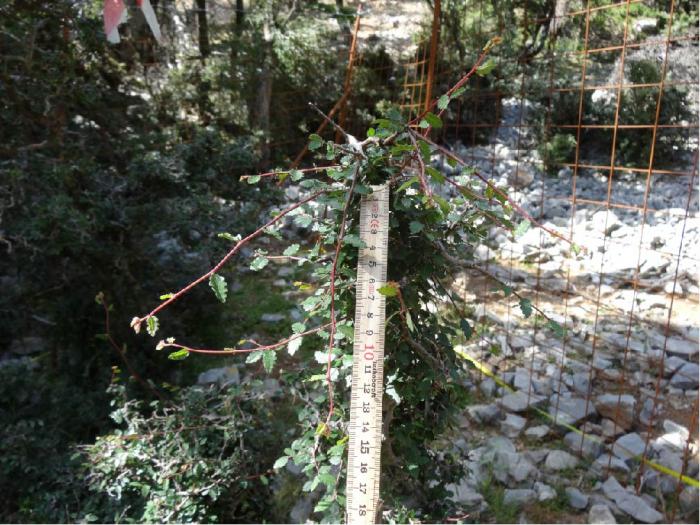
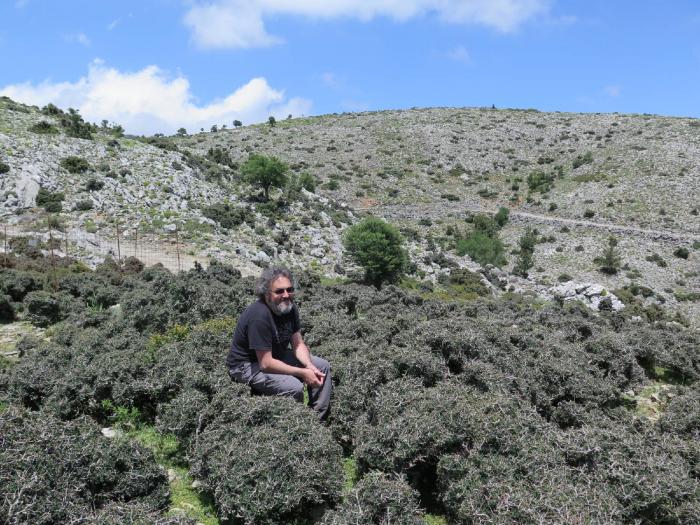
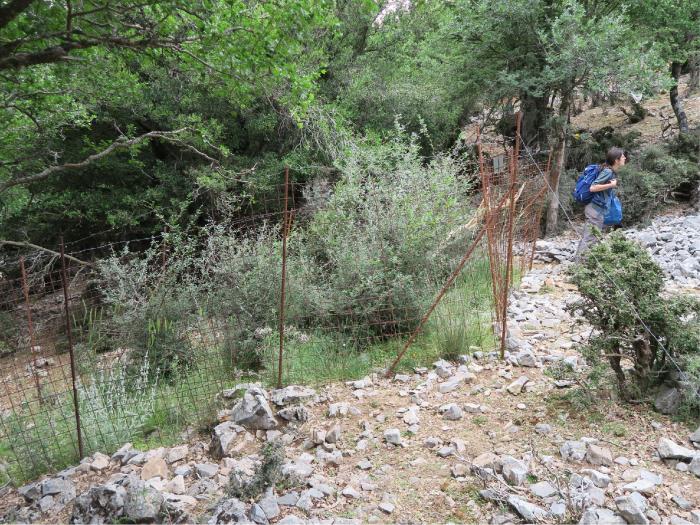
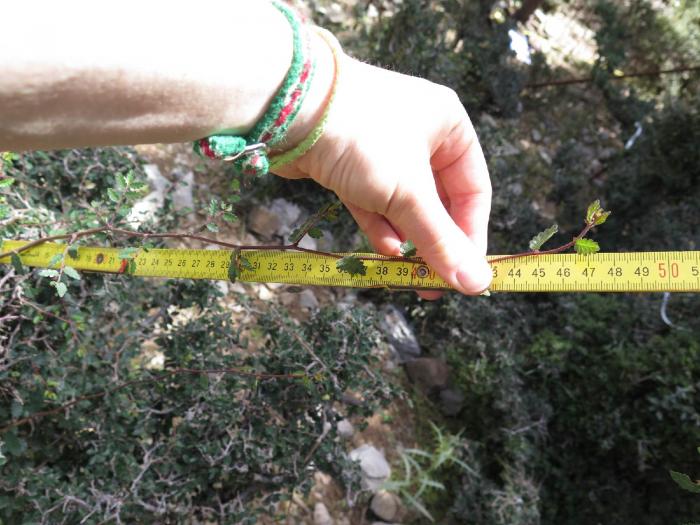
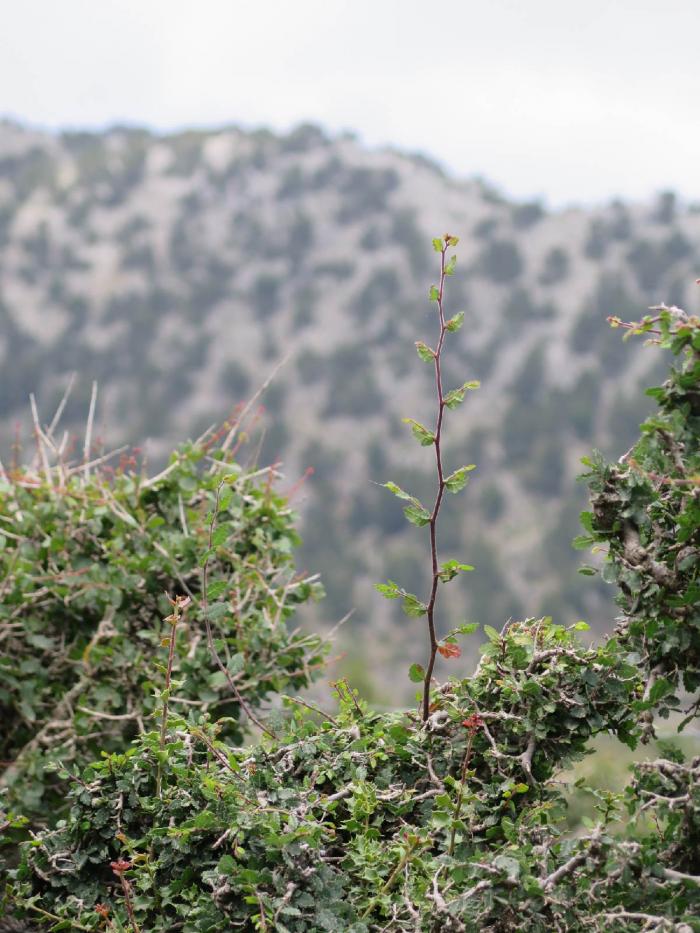
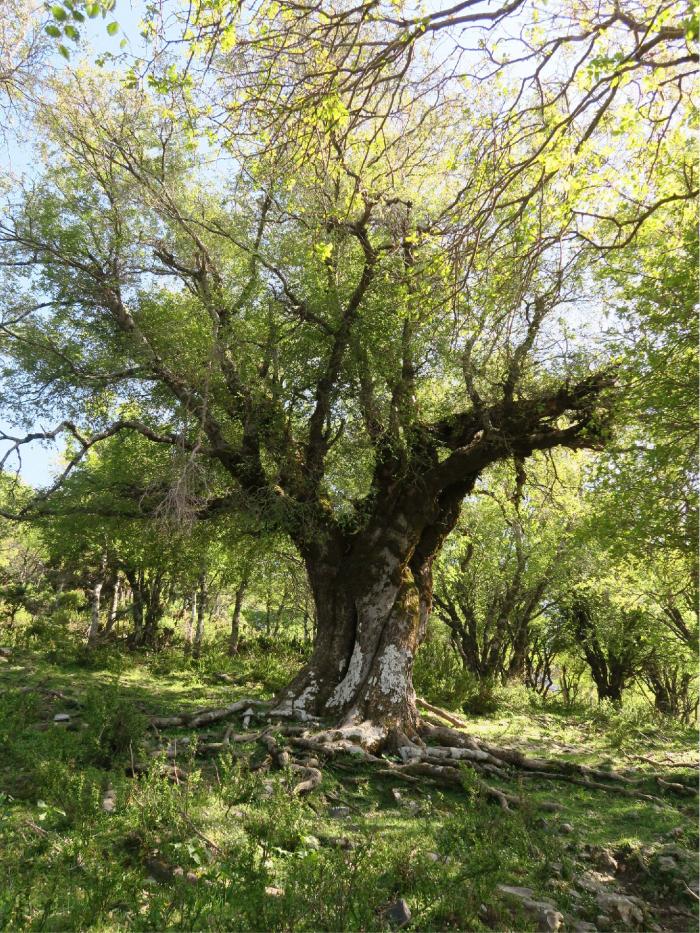
New publication of Laurence Fazan
This paper was published as part of the PhD thesis of L. Fazan and is entitled “Factors influencing the diversity and distribution of epiphytic lichens and bryophytes on the relict tree Zelkova abelicea (Lam.) Boiss. (Ulmaceae)”. It was published in the journal The Lichenologist.
The focus of this paper was to investigate for the first time the diversity and distribution of epiphytic lichens and bryophytes growing on Zelkova abelicea bark (both on dwarfed and tree-like individuals). The results revealed that Z. abelicea has a high diversity of epiphytes. 17% of the studied lichen species were previously unrecorded for Crete and 5% had never been recorded for Greece. Specific areas in the Cretan mountains were highlighted as being hotspots for both lichens and bryophytes. Bryophytes were absent from several sites in central and eastern Crete. Different epiphyte communities were found according to the geographical position of the trees, their habit (dwarfed vs tree-like) and the browsing intensity of the habitats. The study showed that high epiphytic diversity was found in several sites despite concomitant signs of eutrophication and disturbance due to pastoral activities and suggest the co-occurrence of both disturbance tolerant and sensitive species. This paper shows how little is known to date on the epiphytic diversity of Cretan trees and highlights the need for further research on this topic.
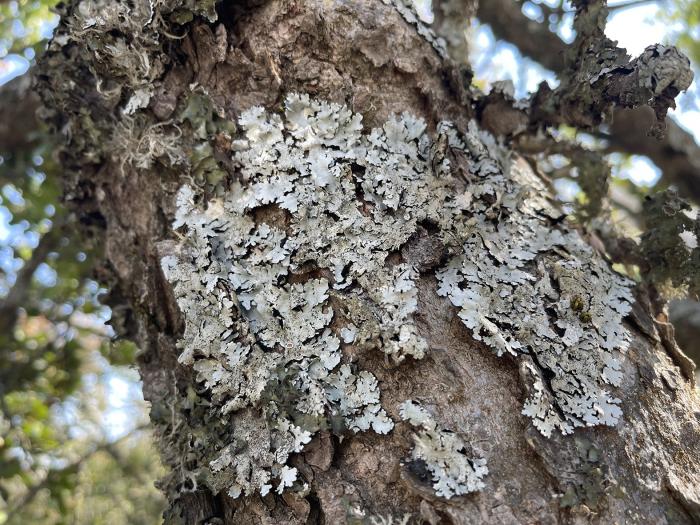
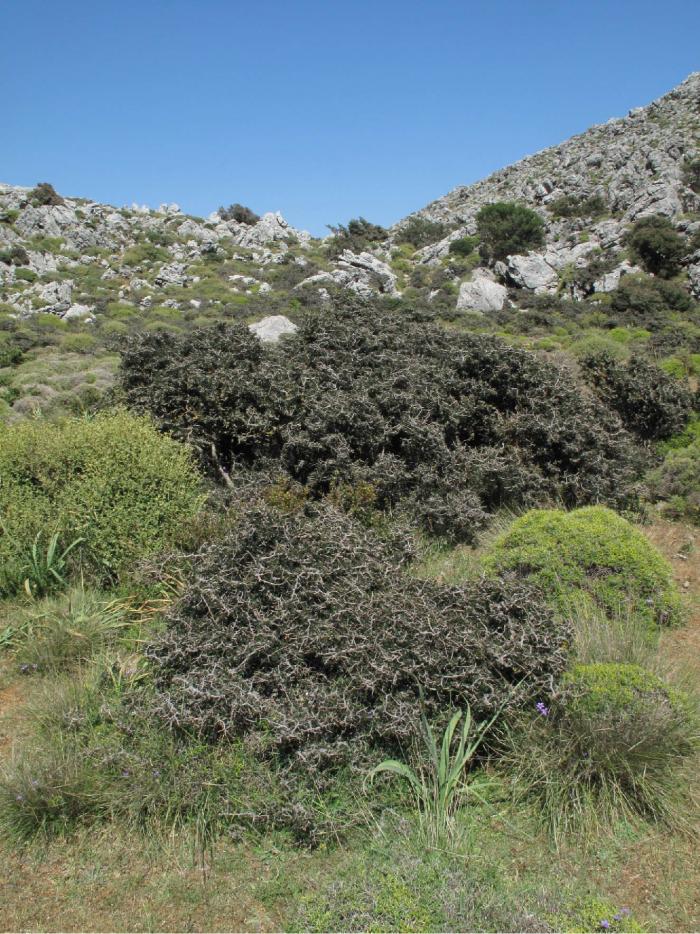
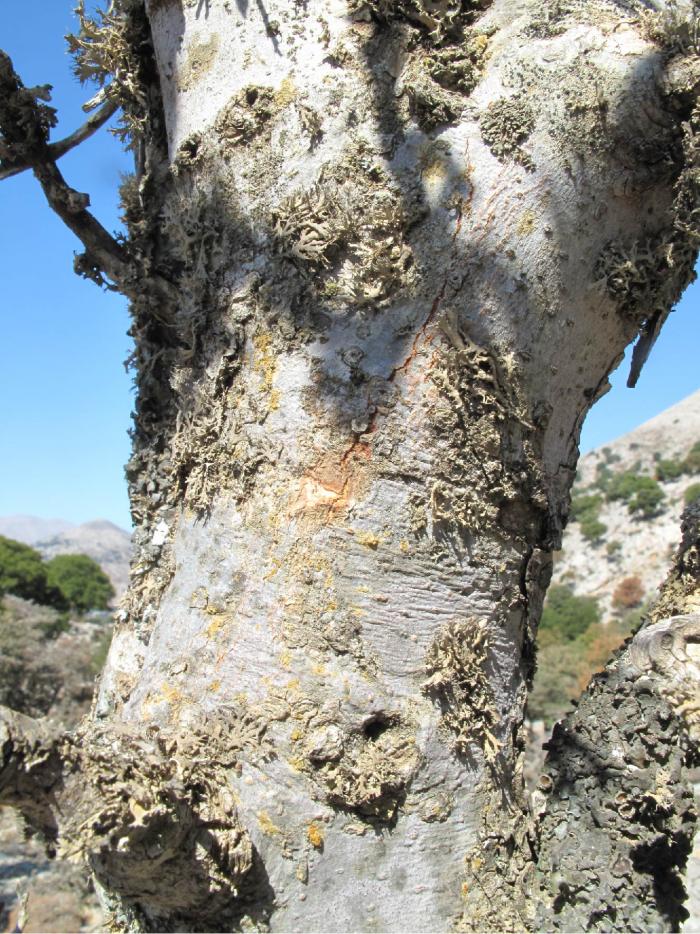

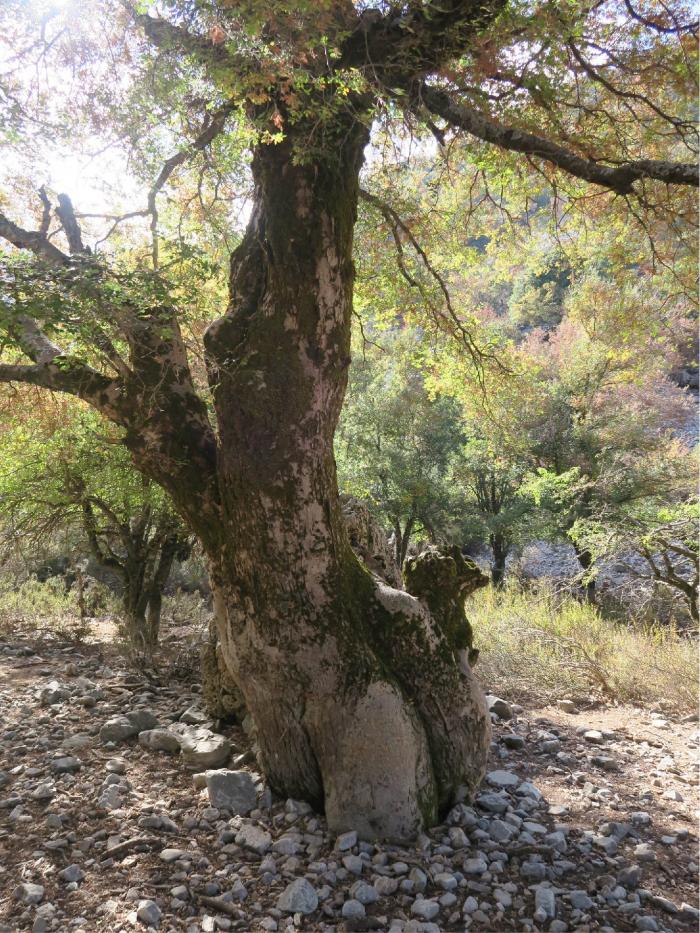
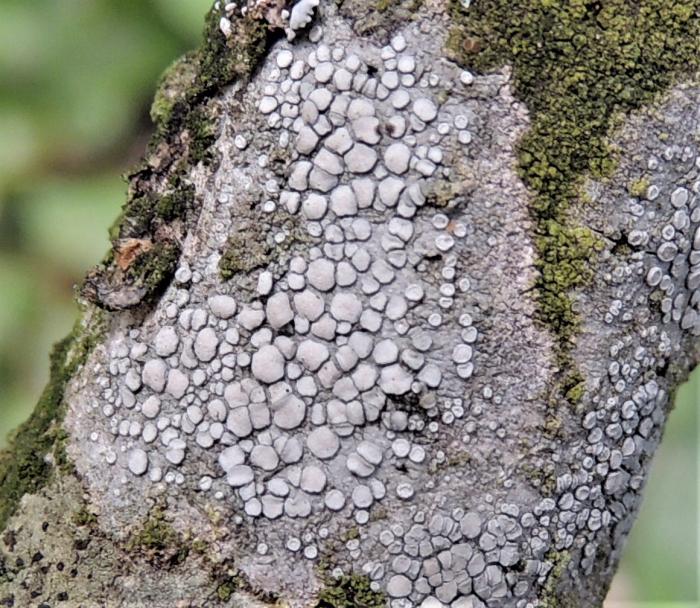
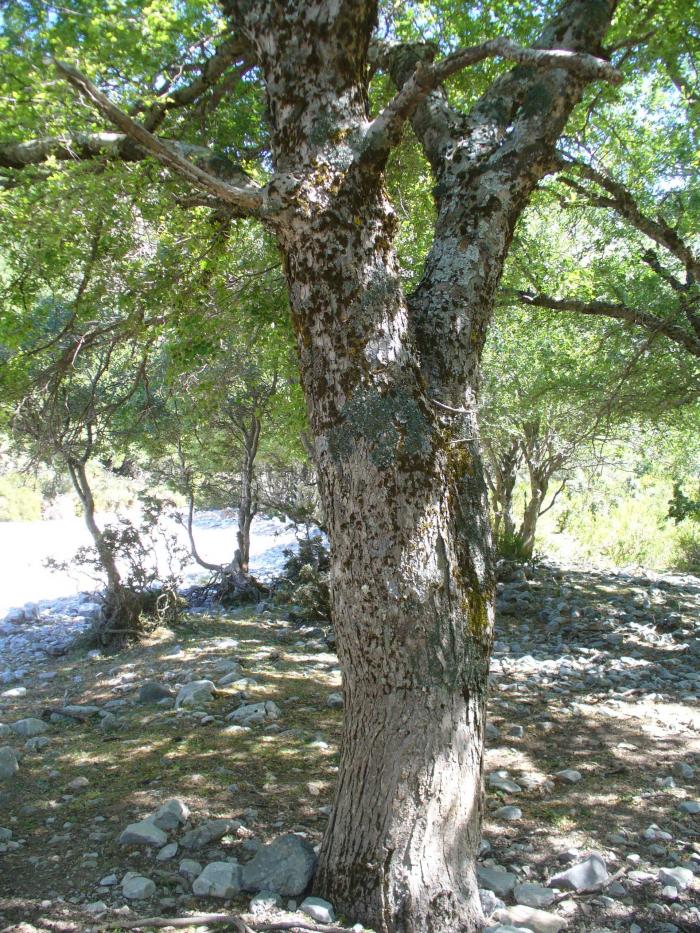

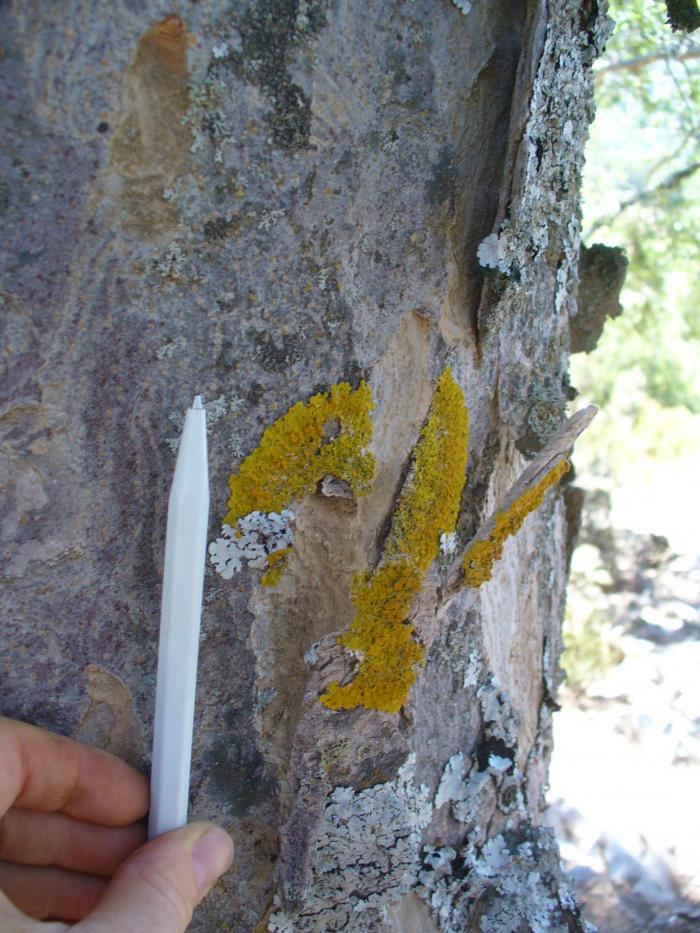
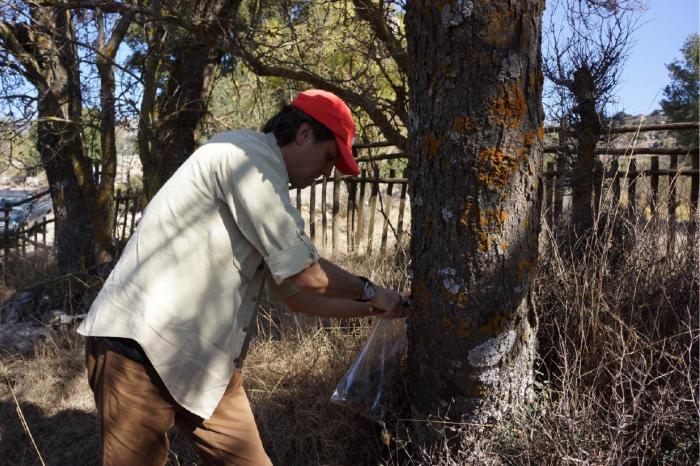
Global biogeographical and ecological synthesis of Ulmaceae
Yann Fragnière (team of the Botanic Garden of the University of Fribourg) published a new paper entitled “Biogeographic overview of Ulmaceae: diversity, distribution, climatic and ecological preferences” in the journal Plants.
In this study, we aimed to present a first biogeographic synthesis investigating the global diversity, distribution, climatic and ecological preferences and the conservation status of Ulmaceae. Our results corroborate recent molecular analyses and support the division of the family into two taxonomically, biogeographically and ecologically well-differentiated groups: the so-called temperate clade with 43 species and four genera (Ulmus, Zelkova, Planera and Hemiptelea) and the tropical clade with 13 species and three genera (Ampelocera, Phyllostylon and Holoptelea). The elm family is often described as a typical temperate plant group, however the diversity peak of all Ulmaceae is located in the subtropical zone, and a non-negligible part of the family is exclusively distributed in the tropics. We also noticed that a high proportion of Ulmaceae is linked to humid macro- or microhabitats. Finally, we highlighted that nearly 25% of all Ulmaceae are threatened. Fieldwork, conservation efforts and research activities are still necessary for this family, particularly for the tropical members and the most endangered species.
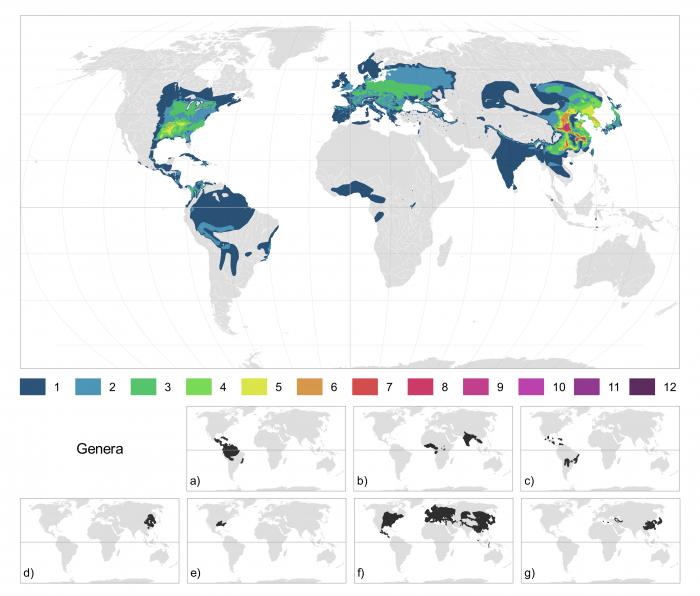
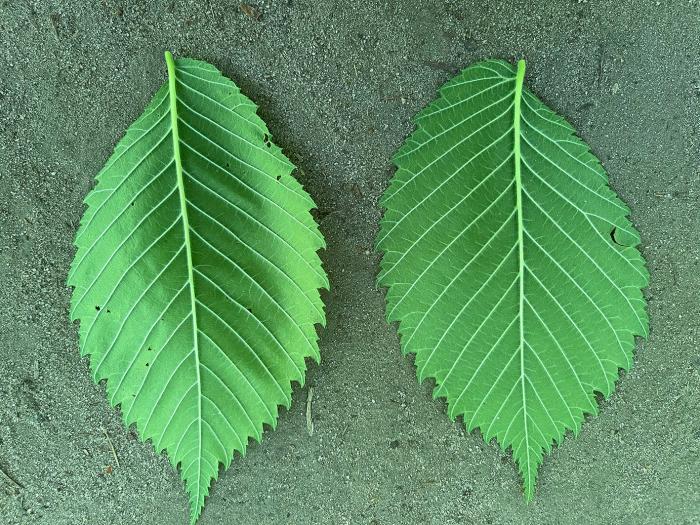
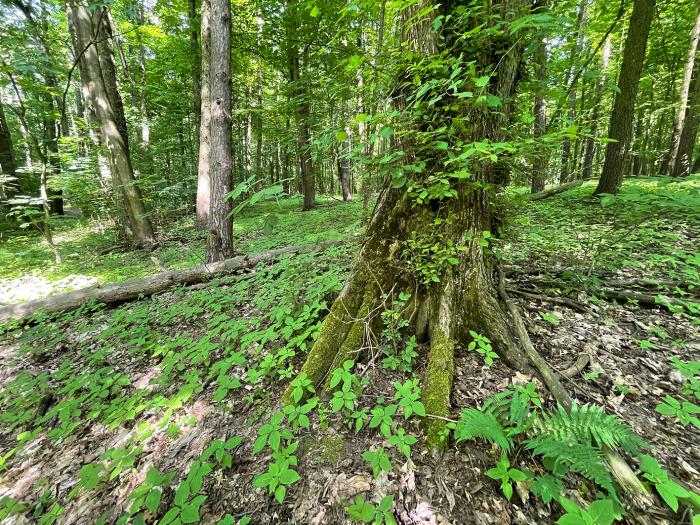
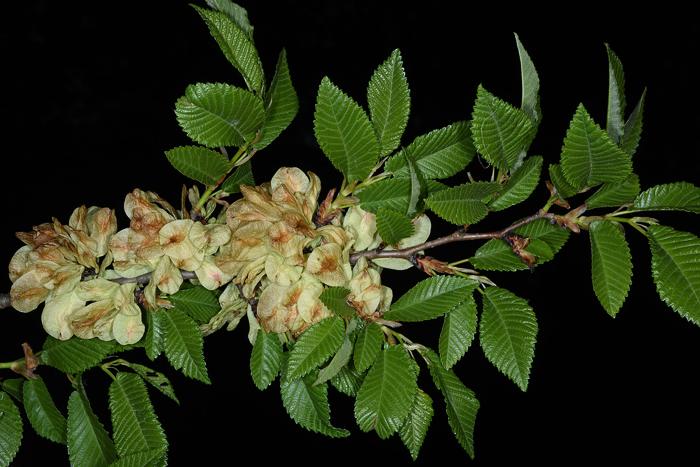
Exclusion of browsing and conservation of Zelkova abelicea
Laurence Fazan (University of Fribourg) published a new paper entitled “Free behind bars: Effects of browsing exclusion on the growth and regeneration of Zelkova abelicea” in the journal Forest Ecology and Management.
In this study we assessed the impact of browsing exclusion on the growth and regeneration of the endangered Zelkova abelicea, a relict tree endemic to Crete (Greece). We found that in the absence of browsing pressure, Z. abelicea produces shoots on average two times longer than when browsed, therefore clearly demonstrating the negative impact of current browsing pressure on the growth performance of the species. The proportion of trees that reached a height considered out of reach of caprine browsing had more than doubled already after four years. Our findings have important implications for conservation actions, as they can help choose which stands and which individuals to fence in priority for efficient long-term conservation.
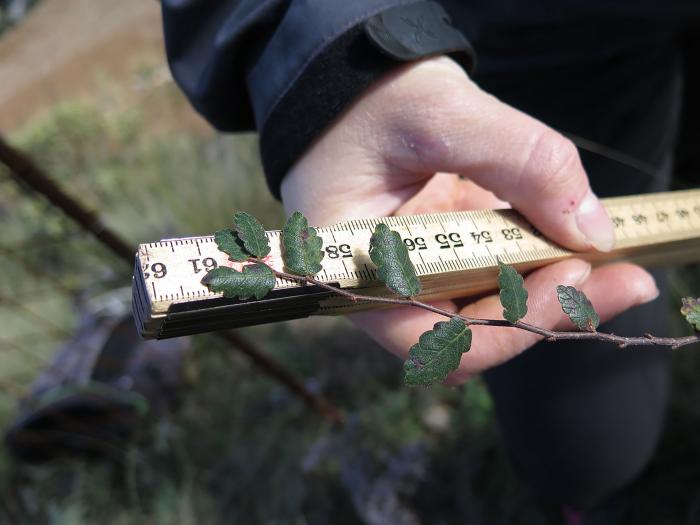


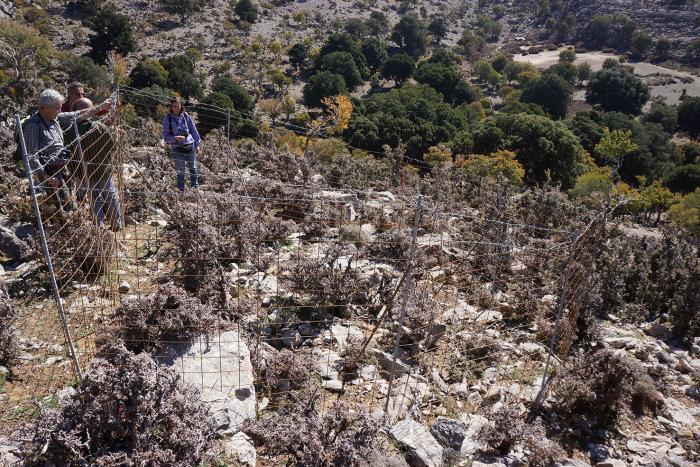
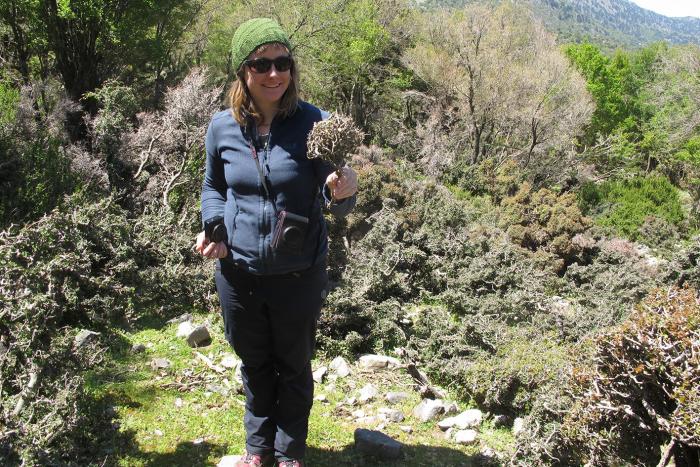
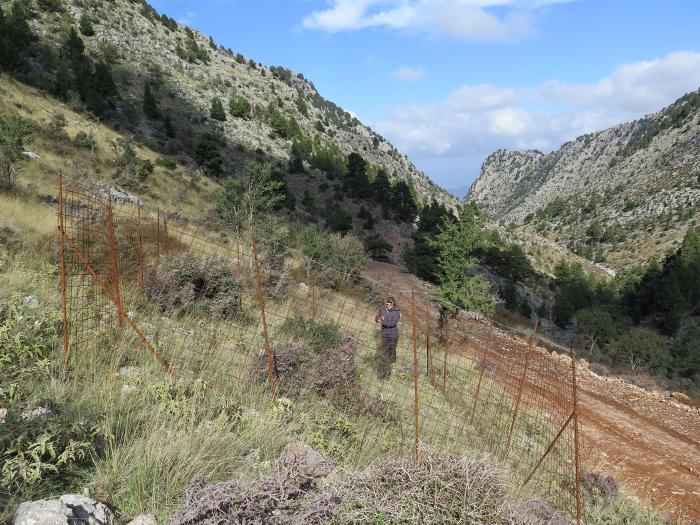
In 2017, the Zelkova abelicea conservation project entered a new phase after the completion of the initial phase that ran from 2014-2016. During this second phase, the applied conservation actions and efforts were pursued and adapted. There are now over 30 fenced areas containing Z. abelicea individuals throughout all the mountains of Crete. The monitoring activities for Z. abelicea and vegetation growth within the fenced plots were continued, and the trees and vegetation continue to show reactions to the exclusion of browsing. 350 additional young Z. abelicea plants were installed in the ex-situ plantation in the Levka Ori, joining the 50 initial trees planted in 2016 by pupils of a local school (see below).
During this year, several information events took place in villages situated in the vicinity of Z. abelicea stands to inform about and involve the local communities in the conservation actions. In autumn, the annual project meeting was held, gathering all project partners together to exchange about the progress of the project. At the same time, seeds from Z. abelicea trees were collected in order to be either safeguarded in the seed bank of the local collaborating institution of MAIX (Mediterranean Agronomic Institute of Chania) or propagated for future ex-situ actions. During this year, Laurence Fazan started a PhD at the University of Fribourg focusing on the conservation of Z. abelicea.
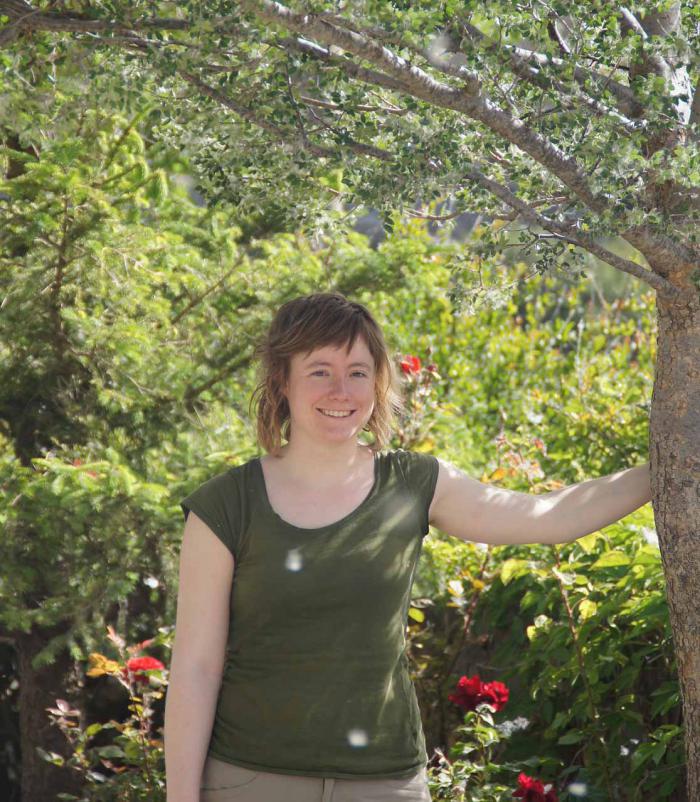
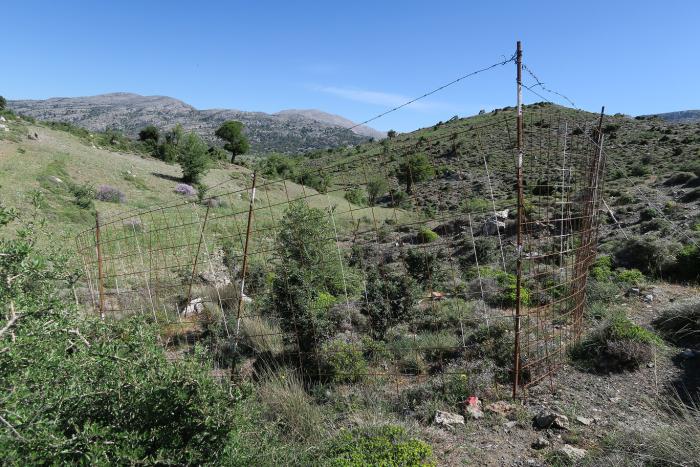
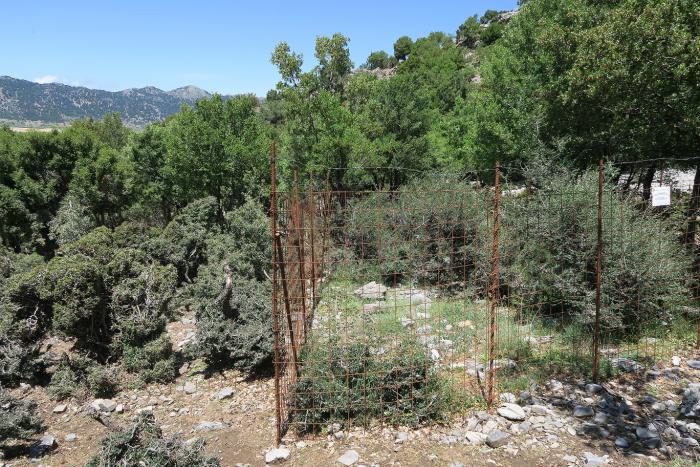
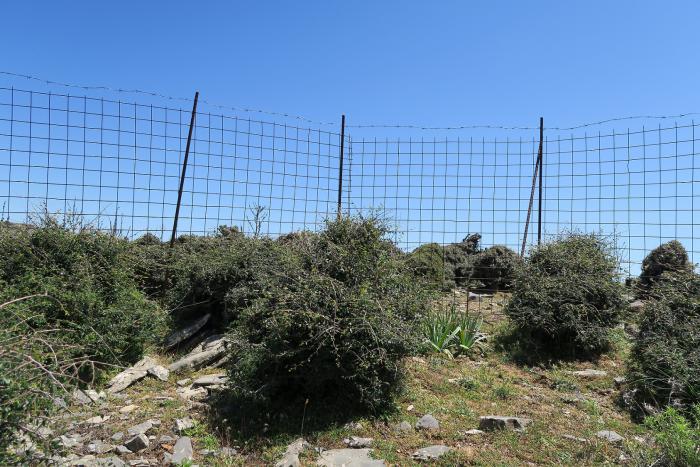
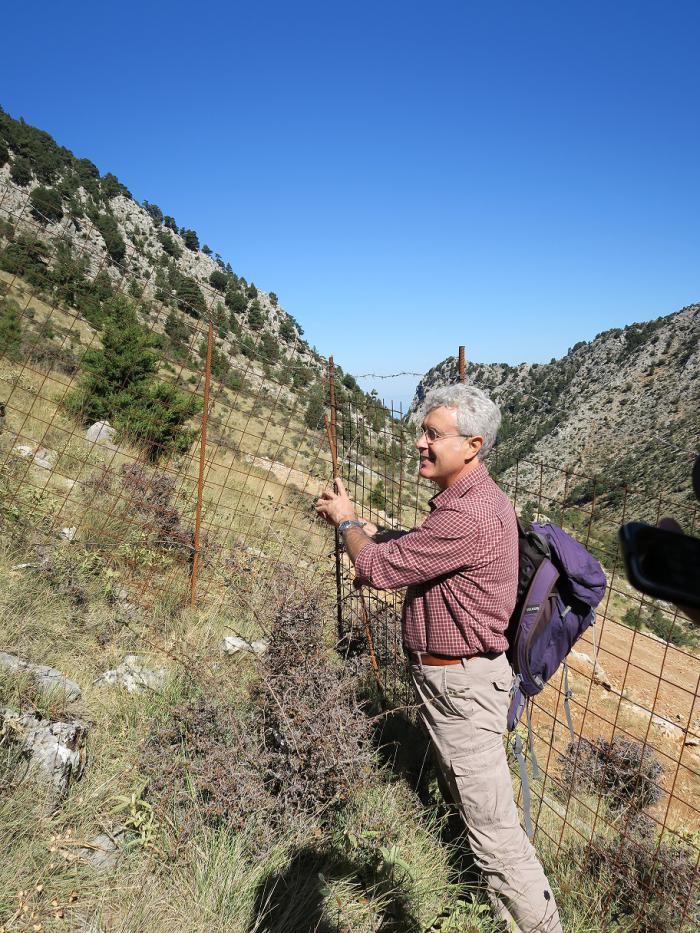
As part of the Zelkova abelicea conservation project, an ex situ plantation was established in the Levka Ori with the involvement of the Municipality of Platanias, the Forest Directorate of Chania (FDC), the Mediterranean Agronomic Institute of Chania (MAICh) and the local Primary school of Skine-Fourne. The purpose of this ex situ plantation is manifold. The primary goal is to conserve the genetic diversity of the local Z. abelicea stands outside the natural populations so as to have a supply of trees in case a dramatic event happens and destroys the natural populations. Another important goal is to give more visibility to this species and help promote environmental education and public awareness. In the long term, the plantation will also provide wood of certified origin for making katsounes, the traditional shepherd walking sticks. The pupils from the local school helped plant 50 young Z. abelicea trees. They did a fantastic job and were very enthusiastic and dedicated! Each tree was given the name of the pupil who planted it.
One of the project activities is to monitor on a yearly basis the vegetation and its changes within the fenced pilot plots as compared to the situation outside the fenced plots in browsed areas. The first fenced plots were established in autumn 2014. Therefore, in the spring 2015, the first effects of the fencing measures were already visible. Within the fenced plots, species richness was in average 45% higher than outside. 19 Cretan endemic taxa were recorded inside the fenced plots. 4 orchid species were recorded. Moreover, vegetation cover was visibly higher inside the plots than outside. In average, vegetation cover was 73% higher within the plots than outside. The cover percentage was highest for therophytes (+328%) followed by hemicryptophytes (+166%) and geophytes (+55%) when comparing the fenced plots to browsed areas. In several plots, shoot elongation clearly increased, with some shoots measuring over 40 cm already in mid-June.
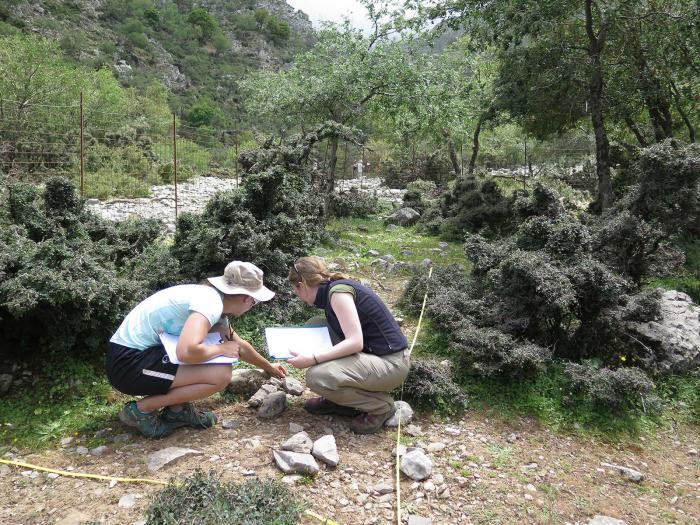
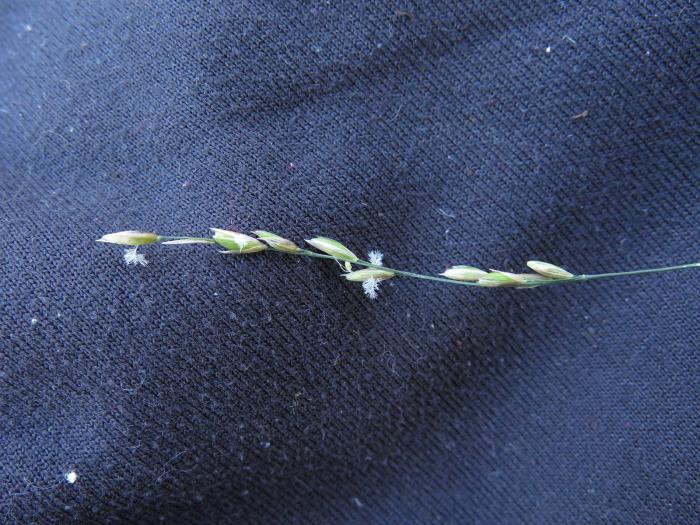
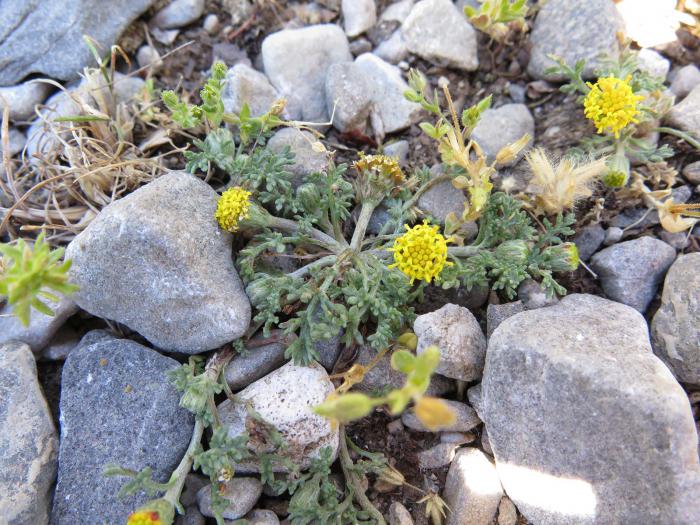

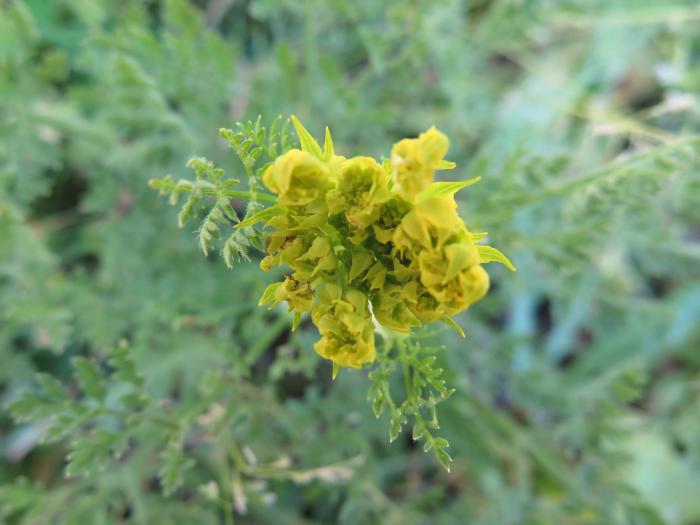
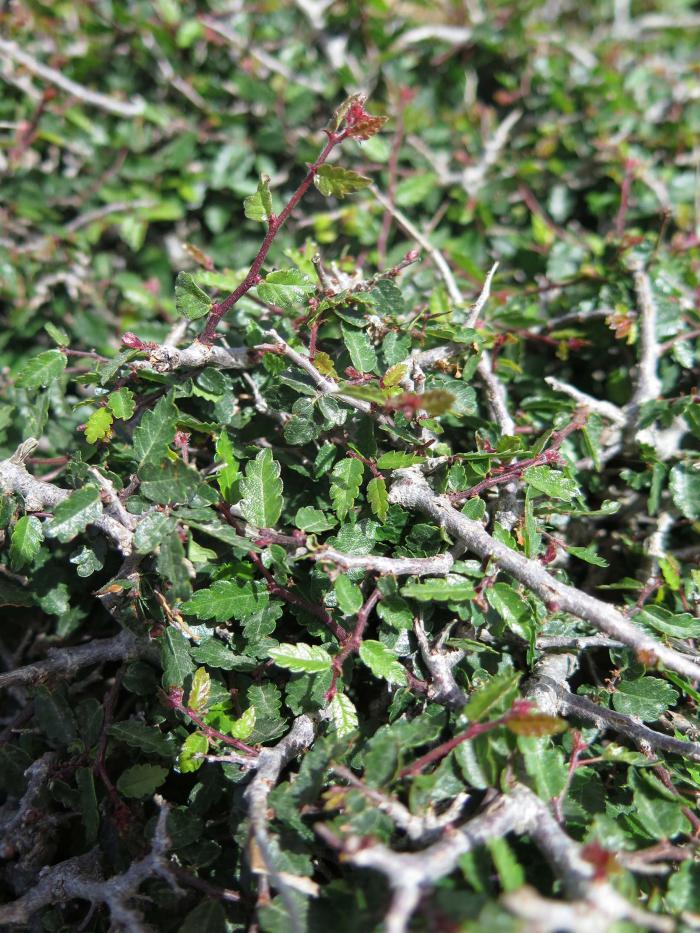

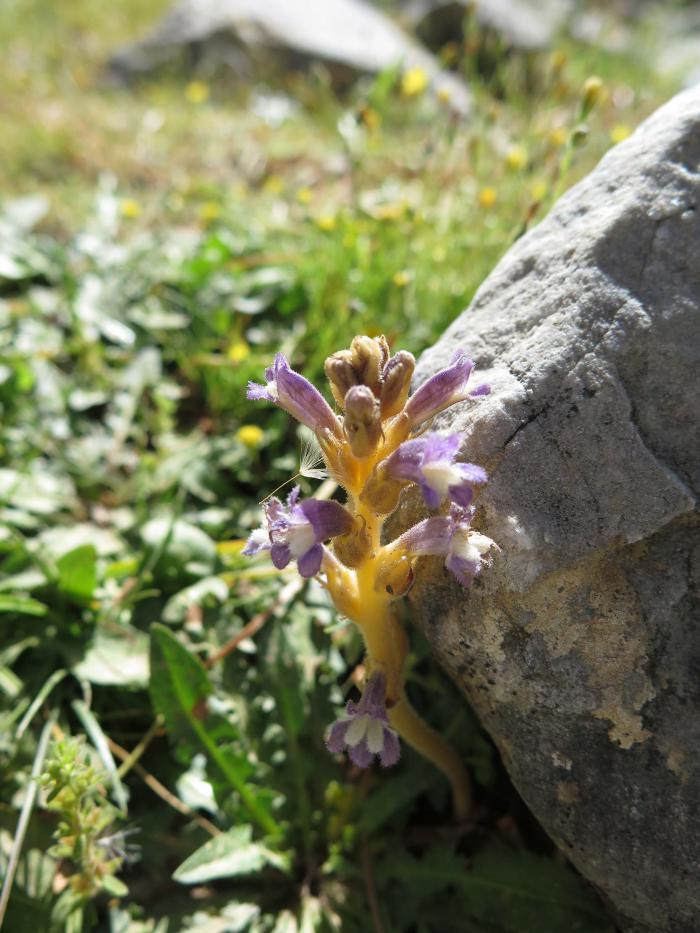
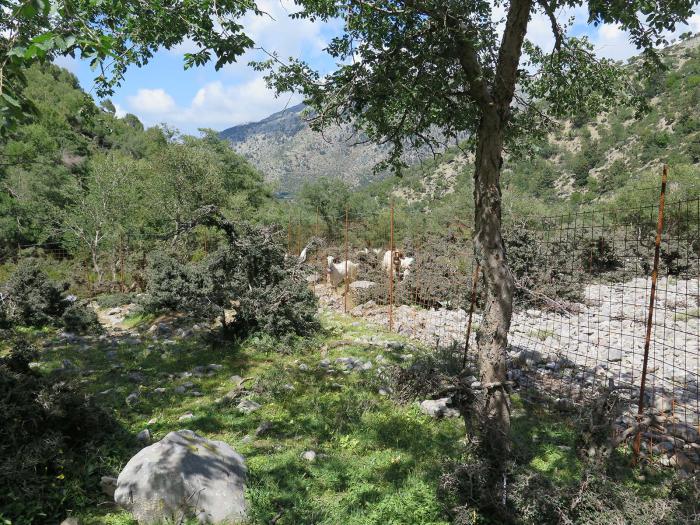
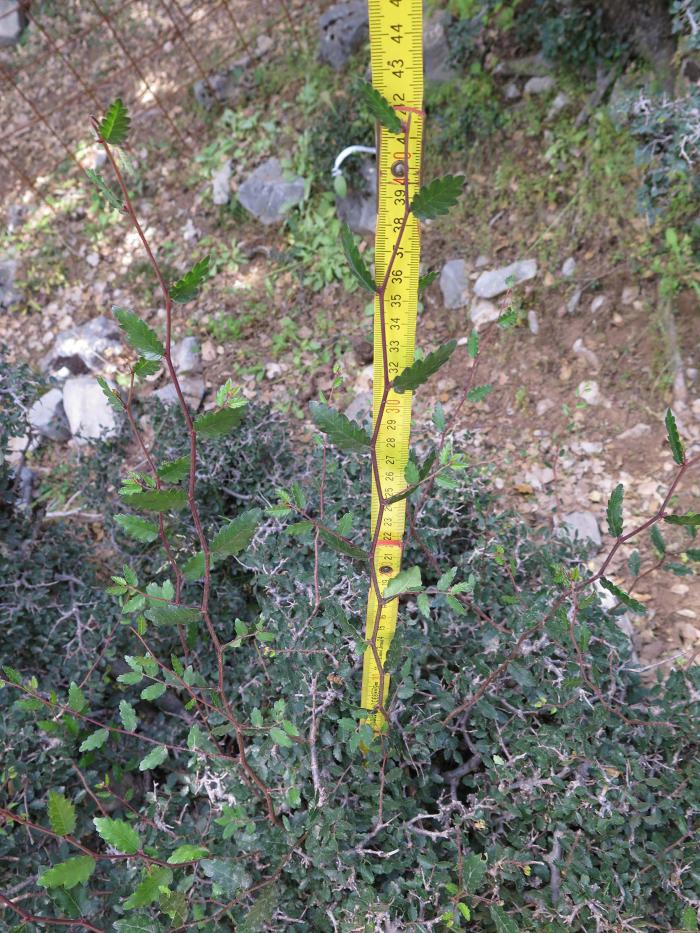
Based on the thorough research work undertaken in recent years, an international, interdisciplinary and integrated conservation program for Zelkova abelicea has been initiated. The implementation of the project is assumed by the Mediterranean Agronomic Institute of Chania (MAICh) in collaboration with the Forest Directorate of Chania (FDC), Forest Directorate of Rethimno (FDR) and Forest Directorate of Heraklion (FDH), as well as with local municipal authorities. International coordination and scientific support is assured by researchers and conservationists form the Universitiy of Fribourg (Switzerland) and National and Kapodistrian University of Athens (Greece), from Botanic Gardens Conservation International (BGCI, United Kingdom) and from the Institute of Biosciences and BioResources of the National Research Council in Palermo (Sicily, Italy). Amongst others, new and genetically representative ex situ collections (field living collections as well as seed banks) are being established using seeds and vegetative plant material sampled from all mountain regions where Z. abelicea occurs. Additionally, selected pilot plots have been fenced and are regularly monitored by the team at MAICh and researchers and students of the University of Fribourg. What is more, a range of local and international campaigns and public outreach events have been realized, including scientific seminars, conferences and exhibitions, accompanied by a series of first-rate public outreach materials.
